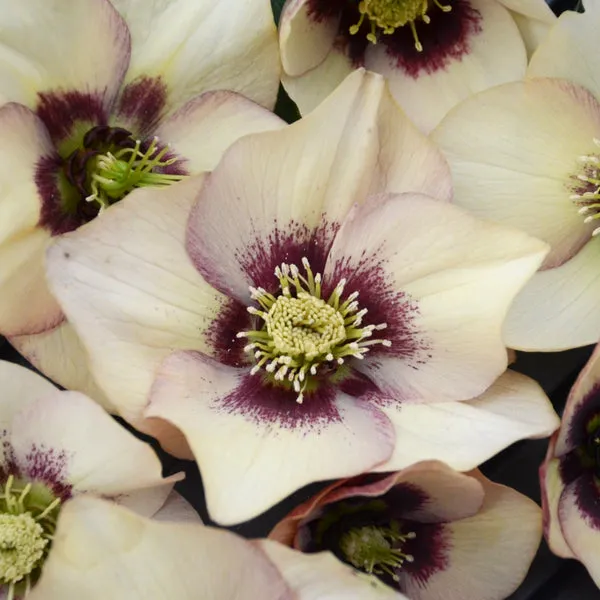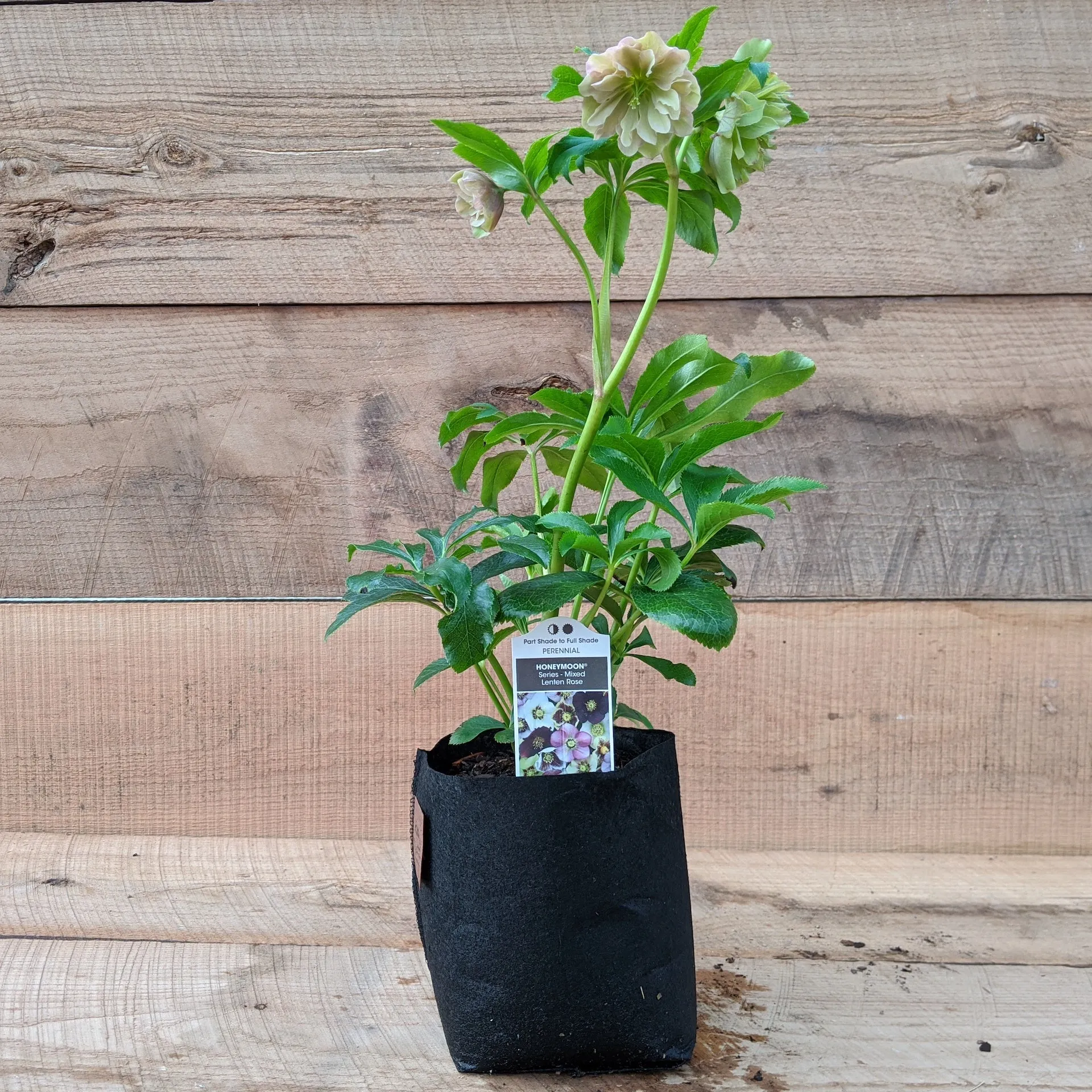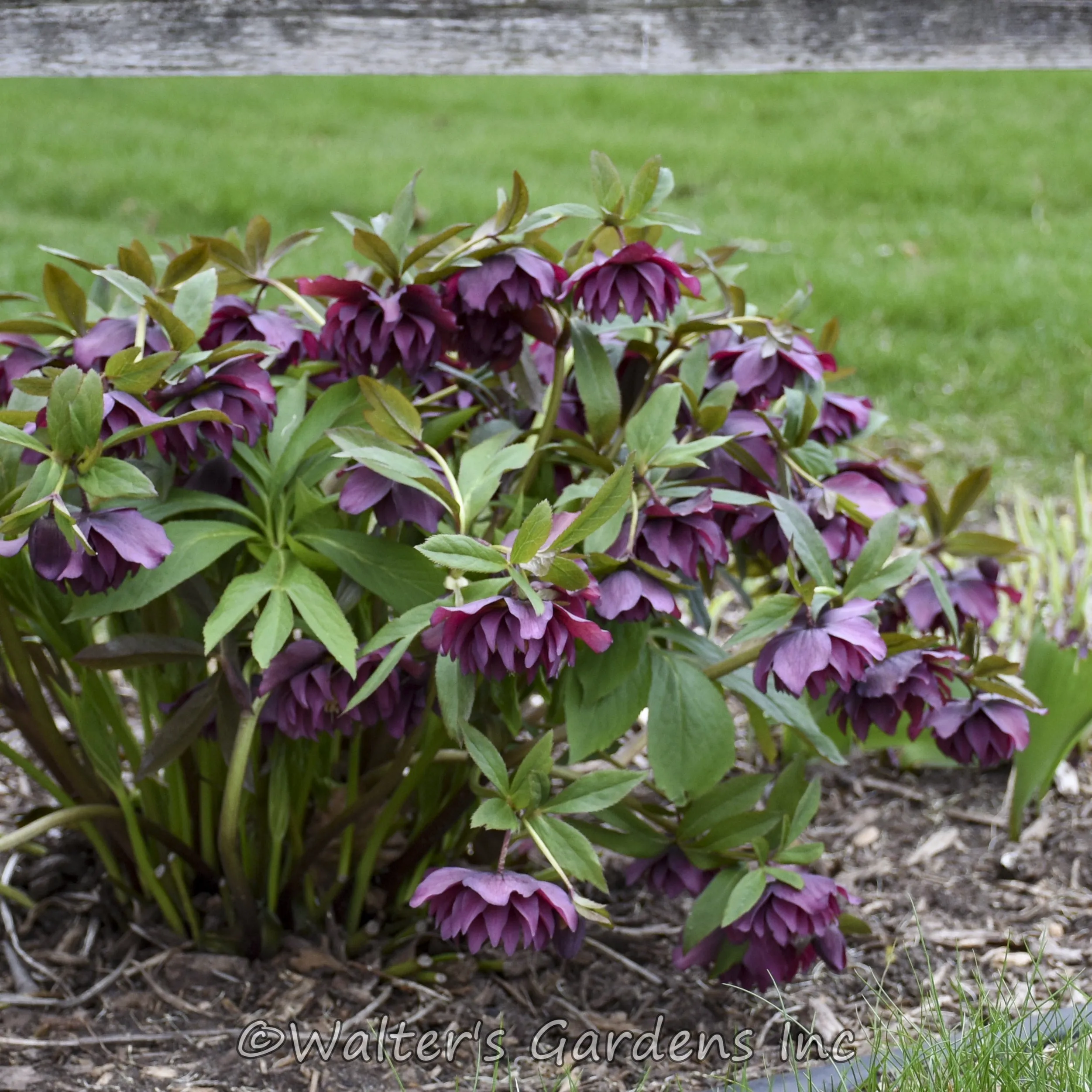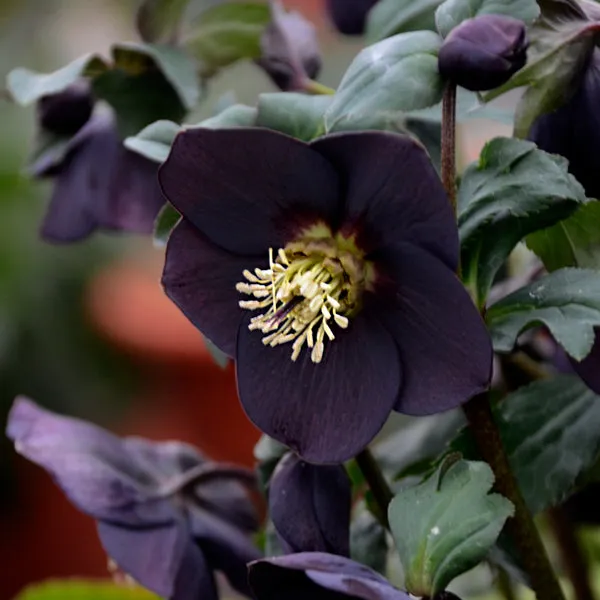Unveiling the Helleborus Honeymoon Mix
The Helleborus Honeymoon Mix, with its exquisite blooms and elegant foliage, has become a favorite among gardeners. Its ability to thrive in shady conditions and its early spring flowering make it a valuable addition to any garden. However, achieving the full potential of these beautiful plants requires understanding their specific needs. This article unveils the top 5 secrets to ensure your Helleborus Honeymoon Mix plants flourish, producing an abundance of stunning flowers year after year. From the correct sunlight exposure to effective pest management, we’ll guide you through the essential steps for cultivating these charming perennials. Prepare to transform your garden into a haven of beauty and enjoy the rewards of a thriving Helleborus Honeymoon Mix display. With the right knowledge and care, anyone can experience the joy of watching these plants come into their own.
Secret 1 Optimal Sunlight and Shade
One of the most critical factors for successful Helleborus Honeymoon Mix growth is providing the right amount of sunlight and shade. These plants are not sun worshippers; they thrive in areas that offer a balance of light and shadow. The key is to replicate their natural woodland habitat. Direct, intense sunlight, especially during the hottest parts of the day, can scorch their leaves and hinder their growth. This delicate balance is crucial. Incorrect light exposure is one of the leading causes of poor blooming. Understanding and implementing the right balance of light exposure is one of the most critical steps to ensuring beautiful blooms. Consider the specific microclimate of your garden and adjust accordingly. For example, a location that receives dappled sunlight through the canopy of trees is often ideal. In the northern hemisphere, a location that receives morning sun and afternoon shade typically works well.
Understanding Light Requirements

Helleborus Honeymoon Mix generally prefers partial shade. This means they need approximately 2-4 hours of sunlight per day, preferably in the morning. The rest of the day, they should be sheltered from direct sunlight. Areas under deciduous trees, where the canopy provides shade during the summer and allows more light during the dormant winter months, are excellent choices. Avoid planting them in locations that get full sun throughout the day, as this can stress the plants and reduce their flowering potential. Pay close attention to how sunlight moves across your garden throughout the day. This awareness will help you choose the most suitable location for your plants. Observe the amount of light the area receives, taking note of any changes throughout the seasons.
Achieving the Ideal Balance
The ideal balance involves finding a spot that offers both sunlight and shade. If your garden is predominantly sunny, consider creating shade by using shade cloths or planting other taller plants to provide cover. Alternatively, choose a location that naturally provides shade, such as near a building, fence, or under trees. Monitor the plants’ condition. If the leaves are turning yellow or the blooms are sparse, it might be an indication that the plants are receiving too much sunlight. Conversely, if the plants appear leggy and fail to bloom, they may be getting too little light. By carefully observing your plants and adjusting their environment as needed, you can create the perfect conditions for them to thrive. Remember that the specific light requirements can also vary slightly depending on your local climate and the specific cultivar of Helleborus Honeymoon Mix.
Secret 2 Perfect Soil Conditions
The soil is the foundation upon which your Helleborus Honeymoon Mix plants will build their beauty. The type of soil you provide will significantly affect their growth, flowering, and overall health. Hellebores are not particularly demanding plants, but they do have preferences. The soil must be right for these perennials to flourish. The optimal soil condition is one that provides excellent drainage, is rich in organic matter, and has a slightly acidic to neutral pH. Investing in the right soil can make a significant difference in how well your Helleborus Honeymoon Mix performs. Poor soil can lead to issues like root rot, nutrient deficiencies, and stunted growth. Therefore, understanding and addressing these soil requirements is paramount to your success.
The Importance of Well-Draining Soil

Well-draining soil is crucial for preventing root rot, a common problem in Helleborus. Roots that sit in waterlogged soil can suffocate and decay, leading to the plant’s demise. To ensure proper drainage, the soil should allow excess water to flow away quickly. Heavy clay soils, which retain water, are generally unsuitable. If your garden has clay soil, you’ll need to amend it to improve drainage. Test your soilu2019s drainage by digging a hole, filling it with water, and observing how quickly it drains. If the water drains slowly, you need to amend the soil. Amending the soil with organic matter improves its structure, increasing drainage. The best approach is to add compost, well-rotted manure, or other organic materials to improve drainage. Drainage is also important for providing the roots with the oxygen that they need to function.
Amending Your Soil for Helleborus
Amending the soil involves adding organic matter to improve its texture, drainage, and fertility. Compost is an excellent choice because it adds nutrients and improves drainage. Well-rotted manure is another good option, but make sure it is fully composted to avoid burning the plants. Other materials that can be used include leaf mold and shredded bark. When amending the soil, dig a hole that is at least twice the width of the root ball and incorporate a generous amount of organic matter into the soil. This will create a favorable environment for root growth. A layer of mulch on top of the soil will also help to retain moisture, suppress weeds, and further improve the soil’s condition. The pH of the soil should be slightly acidic to neutral, between 6.0 and 7.0. Test your soilu2019s pH and amend it with lime or sulfur, if necessary, to reach the ideal range.
Secret 3 Watering Wisely
Proper watering is essential for the health and beauty of your Helleborus Honeymoon Mix. While these plants are relatively drought-tolerant once established, they still require consistent moisture, especially during the growing season and when they are newly planted. The goal is to provide enough water to keep the soil consistently moist but not waterlogged. Overwatering is one of the most common mistakes gardeners make, leading to root rot. On the other hand, underwatering can cause the plants to wilt and fail to bloom. Finding the right balance is key to your plants’ success. Consistent watering habits will greatly impact your plants’ health.
Proper Watering Techniques

Water deeply but infrequently. This means soaking the soil thoroughly, allowing the water to penetrate the root zone. However, avoid frequent, shallow watering, which can encourage shallow root growth and make the plants more susceptible to drought. Water at the base of the plants, avoiding getting the foliage wet. Wet leaves can increase the risk of fungal diseases. A soaker hose or drip irrigation system is an excellent way to deliver water directly to the roots. Water in the morning to give the foliage a chance to dry before nightfall, reducing the risk of disease. Consider the weather conditions. During hot, dry periods, you will need to water more frequently. During cooler, wetter periods, you can reduce watering. Monitor the soil moisture by inserting your finger into the soil. If the top inch or two feels dry, itu2019s time to water. Be mindful of how the weather and environment affect your plants.
Avoiding Overwatering
Overwatering is a major threat to Helleborus. It leads to root rot, which can kill the plants. Ensure your soil has good drainage to prevent water from accumulating around the roots. Avoid watering if the soil is already moist. Check the soil moisture regularly before watering. Reduce watering during the dormant season (winter) when the plants require less moisture. Signs of overwatering include yellowing leaves, wilting, and a general decline in plant health. If you suspect overwatering, reduce your watering frequency and ensure the soil drains well. If the problem persists, you may need to repot the plant in fresh soil. The leaves will be the first place you see the results of overwatering. Carefully assess your watering habits and the needs of the plant.
Secret 4 Strategic Fertilization
Fertilizing your Helleborus Honeymoon Mix is essential for providing the nutrients it needs to thrive and produce abundant blooms. While these plants are not heavy feeders, they benefit from regular fertilization, especially during the growing season. Choosing the right fertilizer and applying it at the correct time will make a significant difference in the overall health, vigor, and flowering potential of your plants. Fertilizer helps to replenish nutrients in the soil. A well-fed plant is more resistant to disease and pests. It is a key component of a successful gardening experience. Fertilizer provides the necessary boost to unlock the beauty of your garden.
Choosing the Right Fertilizer

Select a balanced, slow-release fertilizer formulated for flowering plants. Look for a fertilizer with a balanced NPK ratio (Nitrogen, Phosphorus, and Potassium), such as 10-10-10 or similar. Nitrogen promotes leafy growth, phosphorus supports root development and flowering, and potassium enhances overall plant health. Organic fertilizers, such as compost tea or well-rotted manure, are excellent choices. They release nutrients slowly and improve soil health. Avoid fertilizers high in nitrogen, as they can promote excessive foliage growth at the expense of flowers. Consider using a fertilizer specifically designed for perennials. Always follow the manufacturer’s instructions for application rates. Using the right fertilizer is key. The right fertilizer will promote the growth of beautiful blooms.
Fertilizing Schedule and Timing
Fertilize your Helleborus Honeymoon Mix in early spring, just as new growth emerges. This provides the plants with the nutrients they need to support their flowering and growth. Reapply the fertilizer in late spring or early summer, following the instructions on the fertilizer label. Avoid fertilizing in late summer or fall, as this can encourage new growth that is susceptible to winter damage. Water the plants well after fertilizing to help the nutrients penetrate the soil and reach the roots. Too much fertilizer can be as harmful as too little. Adhering to a schedule can ensure a healthy balance for your plants. Careful timing is important for the best results. Consistent and strategic feeding will promote beautiful blooms.
Secret 5 Effective Pest and Disease Management
While the Helleborus Honeymoon Mix is relatively resistant to pests and diseases, it is still important to take preventative measures and address any problems promptly. Regular monitoring, proper cultural practices, and the use of appropriate treatments can help keep your plants healthy and beautiful. Pests and diseases, if left unchecked, can weaken the plants, reduce flowering, and even cause death. Early detection is essential. The best approach is to create a healthy environment and monitor the plants for problems. By being vigilant and proactive, you can ensure your Helleborus Honeymoon Mix remains a thriving part of your garden. Pest management is an important part of ensuring healthy plants.
Identifying Common Problems

Common pests that can affect Helleborus include aphids, slugs, and snails. Aphids are tiny, sap-sucking insects that can cause distorted growth. Slugs and snails can munch on leaves and flowers. Common diseases include leaf spot, caused by fungal pathogens. Symptoms of leaf spot include brown or black spots on the leaves. Another common problem is root rot, which can be caused by overwatering or poorly draining soil. Regularly inspect your plants for any signs of these pests or diseases. Look for discolored leaves, unusual growths, or any signs of damage. The faster you identify the issue, the faster you can address it. Be sure to learn more about common pests and diseases.
Preventative Measures and Solutions
Preventative measures are the most effective way to protect your Helleborus Honeymoon Mix. Ensure good air circulation by spacing plants properly and avoiding overcrowding. Water at the base of the plants to avoid wetting the foliage, which can promote fungal diseases. Remove any fallen leaves and debris, as these can harbor pests and diseases. If you notice aphids, you can dislodge them with a strong spray of water or treat them with insecticidal soap. For slugs and snails, handpick them or use slug and snail bait. If you notice leaf spot, remove and dispose of affected leaves. Preventative measures can go a long way in keeping your plants healthy. Addressing pests and diseases is crucial for beautiful blooms.
Conclusion Blooming Success with Helleborus Honeymoon Mix
By following these five secrets u2013 providing optimal sunlight and shade, ensuring perfect soil conditions, watering wisely, strategically fertilizing, and practicing effective pest and disease management u2013 you can unlock the full potential of your Helleborus Honeymoon Mix. These beautiful plants will reward your efforts with a profusion of stunning blooms, adding elegance and charm to your garden year after year. Remember that gardening is a journey, and patience and observation are key. Continue to learn, adapt, and refine your approach. With these tips, youu2019re well on your way to creating a thriving and beautiful display of Helleborus Honeymoon Mix. Enjoy the process and the beauty that unfolds in your garden. The rewards of a well-tended garden are truly worth the effort.
